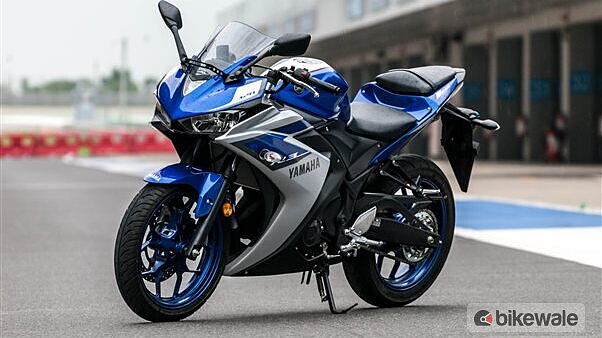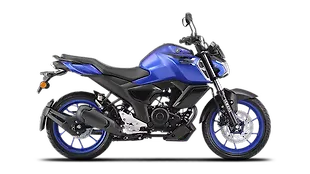YZF-R3 vs Ninja 300 vs CBR250R

Kawasaki enjoyed an illustrious status in India for a long time, thanks to the monopoly of the Ninja 250R. However, competition from the fuel-injected Honda CBR250R meant that the Kawasaki had to up the ante with the Ninja 300. Now though, Yamaha is threatening to shake things up in the entry-level sportsbike segment, with the all-new YZF-R3. Despite being late to the party, the YZF-R3 seems like a well-balanced package, thanks to its powerful engine, modern ergonomics and the lucrative price tag. Till we get our hands on the Ninja 300, YZF-R3 and the CBR250R for a head to head shootout, here is a spec comparison of these entry-level sportsbikes, to see how they stack up against each other.
Design and Engine

The Ninja 300 prides itself on the iconic ‘Ninja’ pedigree, something which is conspicuous in the motorcycle’s design. At the heart of the Ninja 300 is a 296cc parallel-twin engine, which puts out 38bhp and 27Nm of torque. The YZF-R3 is no different as it draws inspiration from the Yamaha’s iconic R Series of sportsbikes. The extra displacement of the YZF-R3’s 320cc mill has helped Yamaha squeeze out 42bhp and 30Nm of torque, which makes it the most powerful bike in this lot. Though the Honda CBR250R has been given a major revamp in other global markets, the India-spec model continues to get the VFR1200F-inspired styling. With just 26bhp available at the crank of the 249cc single-cylinder engine, the CBR250R gets a strong mid-range which makes it ideal for touring as well as city riding.

With low seat height, rear set footpegs and moderately low handlebars, both the Ninja 300 and the YZF-R3 get a sport-oriented riding position. This not only makes your daily commutes and weekend rides enjoyable, but also comes handy on a race track. The CBR250R on the other hand, is more of a touring motorcycle than a track tool. The big seat allows the rider to either sit upright for commutes and highway hauls, or get a slight front lean for a sporty riding posture.

Suspension and Brakes

All three motorcycles get conventional non-adjustable telescopic forks at the front and a monshock at the rear. While the YZF-R3’s rear monoshock gets a seven-step preload adjuster, the ones in the Ninja 300 and CBR250R come with five-step adjustability. The YZF-R3 is seven kilograms lighter than the Ninja 300 and 12 kilograms heavier than the CBR250R.

The YZF-R3 comes with a 298mm floating disc brake at the front and a 220mm disc in the rear, while the Ninja 300 gets a 290mm petal disc at the front and a 220mm disc at the rear. Neither of the two is available with ABS, even as an optional extra. Yamaha has revealed that an ABS version will be launched in the near future, though this might escalate the YZF-R3’s price by almost Rs 30,000. The CBR250R is offered with 296mm front disc and a 220mm rear disc brake and is the only motorcycle in this lot to get ABS, in the guise of Honda’s proprietary C-ABS (Combined ABS) system. The Ninja 300 gets a bonus with the slipper clutch, which is missing in the YZF-R3 and the CBR250R.

Price

At Rs 1.88 lakh (ex-showroom, Delhi), the CBR250R ABS is a perfect entry-level sportsbike for someone on a budget. For others who are looking for something more powerful and sophisticated, the Ninja 300 and the YZF-R3 are just what the doctor ordered. They pack enough punch to keep you happy, though not enough to scare you out of your wits.

With a sticker price of Rs 3.65 lakh (ex-showroom, Delhi), the Ninja 300 is a good all-rounder which offers decent performance, good handling and comfort. Yamaha has had one advantage of entering the segment late: it had plenty of time to study the competition. The YZF-R3 is modern, better looking and more powerful than the Ninja 300, and with the price tag of Rs 3.25 lakh (ex-showroom, Delhi), seems like a good bargain too.

Gallery
1/13
Double Tap to Zoom






















![Yamaha YZF-R3 [2016-2017] Image Yamaha YZF-R3 [2016-2017] Image](https://imgd.aeplcdn.com/272x153/bw/models/yamaha-r3.jpg?20190103151915&q=80)
























![KTM 390 Adventure X [2025] KTM 390 Adventure X [2025]](https://imgd.aeplcdn.com/272x153/n/cw/ec/190885/390-adventure-x-2025-right-side-view.jpeg?isig=0&q=80)